Inside story of man who found bone that sparked outback town’s dinosaur frenzy
Queensland has become the scene of some of the world’s most extraordinary dinosaur discoveries – and experts believe we’ve barely scratched the surface.
National
Don't miss out on the headlines from National. Followed categories will be added to My News.
It’s a story that starts, as the best bush yarns often do, with a farmer standing in a field.
Actually, that’s not entirely accurate.
For one, livestock farmers are technically called graziers, and secondly, to really start this story we need to go back, way back, as they say in the classics, back in time. One hundred million years ago to be precise – give or take a few millennia.
It is the height of the Cretaceous period and the Queensland Outback is nothing like the dry dusty desert of today.
With vast inland seas stretching across much of the Australian interior, the climate is unrecognisable.
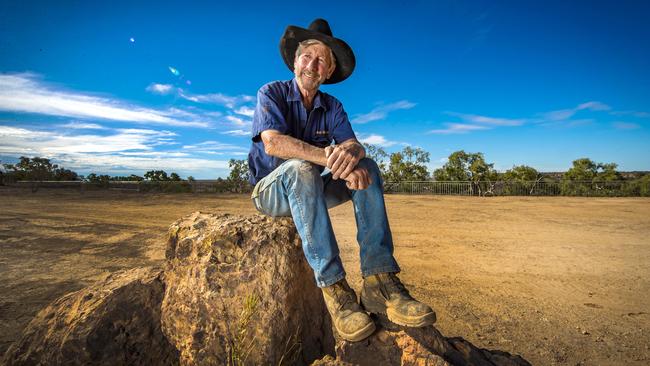
It’s a steaming, heaving mass of humidity with a landscape dominated by tropical rainforests, lakes, swamps – and giant dinosaurs.
As it so happens, this climate is also perfect for preserving dinosaur bones.
Creatures that live and die along the shores of these masses of water are covered with layers of rich sediment, where they remain buried for millions of years.
Unlike other places where bones exposed to the elements simply crumbled to dust or were destroyed by the lava and ash of volcanic eruptions, skeletons across the Queensland Outback were effectively given a warm blanket to withstand the sands of time before ever so slowly pulling back the covers.
It’s left the region as one of the world’s most exciting dinosaur discovery hot spots, a treasure trove of hidden gems just waiting to be uncovered.
Which brings us back to the grazier standing in his field near the outback Queensland town of Winton, population 875.
David Elliott, 64, is a fourth-generation Winton man.
His great-grandfather moved to the area, about 180km northwest of Longreach, or 900km west of Mackay, in the 1880s after working with railway gangs.

Elliott’s father Bob had been an air bomber in World War II, flying dozens of dangerous missions over Europe.
“I’m lucky to be here,” Elliott admits.
His father returned from the war to a much quieter life on the family sheep station in the Winton district, but after surviving countless machine gun bursts from German anti-aircraft gunners in the war, he was taken by cancer at the age of 54. Elliott was just 17.
One of five children, he felt the impact of his father’s death hard.
“It probably shaped me into who I am today,” he says.
“I was the oldest son, so a lot of it fell to me.
“We had people telling us we would never be able to keep the farm with Dad gone and we’d have to sell up to survive, but we didn’t want to just give up. It was just the way we were.
“We had to take on a lot, but we never looked back.”
After studying at a pastoral college following high school he returned to the property, where he raised a family of his own.
He knew the land well and he knew there were old fossils embedded in chunks of rock.
“I wasn’t obsessed by dinosaurs or anything, but I’d always been interested in natural history,” he says.
“My brother and I were always picking up rocks and fossils.”
He reckons he had found about half a dozen dinosaur fossils before striking the mother lode that would alter the course of Winton’s history forever.
“It was the afternoon and I was mustering a flock of sheep,” Elliott recalls of the day in 1999.
“I knew pretty much straight away that it was a dinosaur bone.”
While he had found bones before, there’d never been anything quite like this one.
It was a femur (upper leg bone) of a plant-eating sauropod and it was the biggest dinosaur bone ever discovered in Australia.
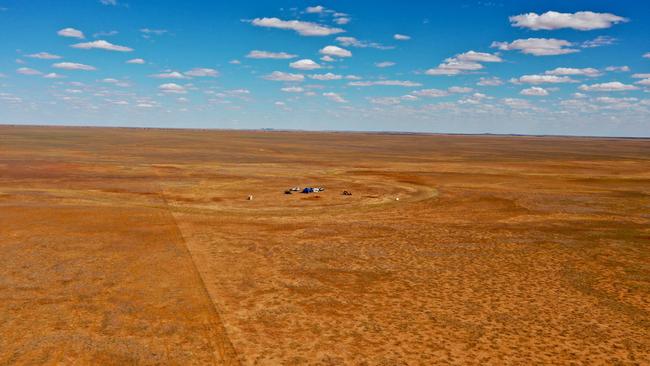
The science world went into a frenzy over the specimen, nicknamed Elliott.
More bones were discovered over the coming years, either by accident, coincidence, or as part of designated digs staged in conjunction with the Queensland Museum.
By 2002, there had been so many fossils discovered that Elliott and his wife Judy called a public meeting in Winton with a view to establishing a dinosaur museum in the region.
The Australian Age of Dinosaurs Museum was born.
“I didn’t want to see all this stuff lost to the region and just ending up in a warehouse somewhere,” Elliott says.
“I thought we could have a few bones on display in a building in town, but we found so much stuff. It grew so quickly – it just got bigger and bigger. It’s still growing.”
Digital exclusive: Read Qweekend the day before it’s printed
The AAOD is now a firm favourite on the outback tourist trail.
Convoys of grey nomads – and an increasing number of young families, flock to the region through the cooler months and the once-struggling country outpost is now a thriving little tourist town.
While Winton has a rich history in the story of Qantas and the Waltzing Matilda ballad (there’s a museum in town dedicated to the poem Banjo Patterson wrote while he was in the area in 1895), out here there is no question that dinosaurs rule.
Wheelie bins throughout Winton are in the shape of giant dinosaur legs, while men in their 70s hop off tour buses in the AAOD car park with the giddy excitement of six-year-old boys.
Whatever humble designs Elliott may have had for the museum quickly fell by the wayside, to the point it is now one of the state’s most decorated tourist attractions.
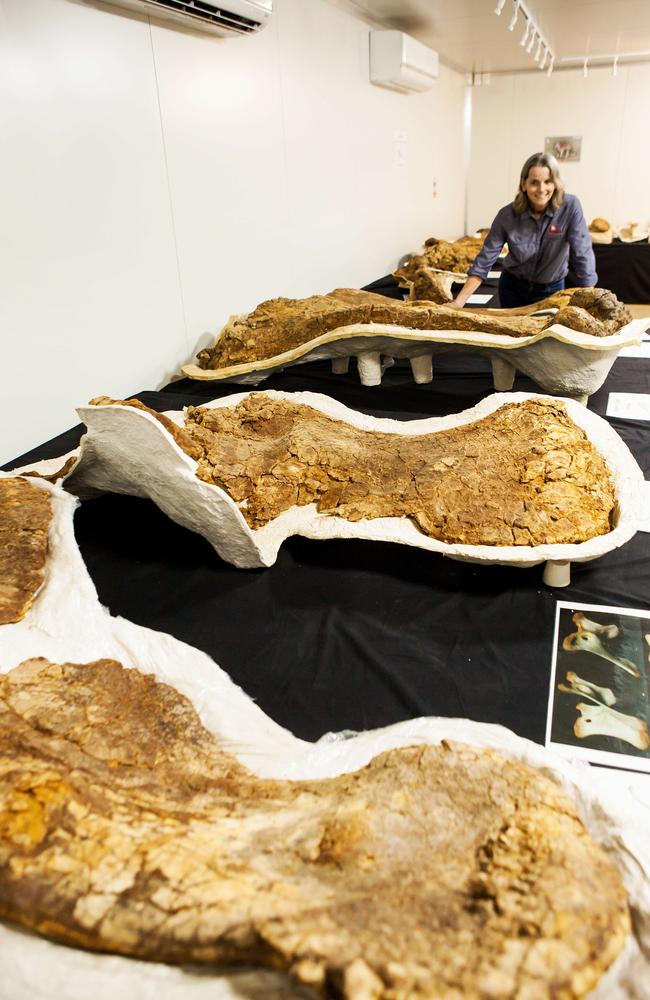
In November 2019, just before the arrival of the coronavirus which has slammed the door shut on international travel, AAOD was named Queensland’s top major tourist attraction, beating out some of the state’s most famous tourism icons.
The same year, Elliott was recognised as Queensland tourism’s individual of the year for his outstanding contribution to the industry through the incredible evolution of the attraction over the past 15 years.
The sprawling precinct is perched high above Winton on the “jump-up”, a mesa-type rock formation jutting spectacularly out of the flat desert.
Interest in recent times has been extraordinary, with last year breaking the all-time attendance record, despite the handicaps of CovidSafe plans and the fact the museum was closed for months at the height of the pandemic.
With crowds heading to the Outback this year like never before, that attendance record is likely to be shattered again, with the latest expansion, including a perfectly-preserved trackway of dinosaur footprints and a night sky stargazing centre, officially opened in May to rave reviews.
For Elliott, the thrill of discovery still remains.
“When you find something it’s pretty exciting,” he says.
The museum now has 31 staff. That’s 31 people who may have otherwise had to move away to chase jobs.
Instead, Winton now has more jobs than people to fill them.
“It’s definitely made a fairly big difference to the town,” Elliott says.
“It could help to keep the place alive.”
More than 600km to the south, the blink-and-you-miss-it village of Eromanga has also been thrust onto the tourist trail by dinosaur discovery.
There are other synergies between Winton and Eromanga, with the whole process once again starting with a grazier in a field.

Local teenager Sandy Mackenzie found a dinosaur fossil in 2004, but it was a discovery made by his mum Robyn and dad Stuart (Quilpie Shire Mayor Stuart Mackenzie) two years later that was the real game-changer.
“Stuart had always been the real believer,” Robyn Mackenzie says.
“He had grown up out here and he had always thought there would be dinosaur bones here.
“When Sandy made his discovery we had to go into Brisbane a little while later so we took it in to show a scientist at the Queensland Museum.
“He started bouncing around the room saying how rare it was. After that we knew what to
look for.
“We were out mustering on our motorbikes one day and we both saw something right in front of us. I had only just found another bone a few minutes earlier, and then we saw this one.”
“This one”, later nicknamed Cooper, knocked Elliott off the perch as Australia’s largest dinosaur. Analysis of the fossils found Cooper, another plant-eater, would have stood as tall as a two-storey building and measured longer than a basketball court, placing him among the five largest dinosaur species to ever roam the earth.
It wasn’t until last month that Cooper was officially described as a previously undiscovered species of dinosaur subsequently named the Australotitan.
While it took more than 15 years to formally identify Cooper, the Mackenzies were not sitting idly by.
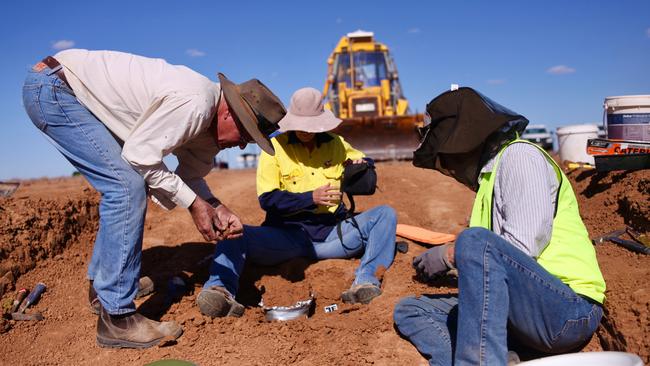
As discoveries began to pile up, they formed the Outback Gondwana Foundation and later the Eromanga Natural History Museum.
And it wasn’t just dinosaur bones turning up.
They also discovered fossilised plant remains and the bones of megafauna including creatures resembling giant wombats, kangaroos, goannas and horrifying land-dwelling crocodiles, through to tiny organisms the size of a grain of sand.
Like Elliott, Mackenzie, 57, is now recognised as a “field palaeontologist”, and while she doesn’t have the fancy qualifications, she has become an expert in the field.
Not bad for someone who had no real interest in dinosaurs as a kid.
“I had no idea about dinosaurs,” she says.
“My mother had these tacky plastic dinosaurs that I always thought were horrible.”
Not surprisingly, she now sees why so many people remain so captivated by creatures which would seem mythological if there wasn’t so much evidence of their existence.
“It’s that fascination isn’t it?” she says.
“These creatures were so big and they were here so long ago.”
While Winton benefits from its proximity to Longreach on the well-worn tourist trail, Eromanga faces a more challenging journey to the title of tourism icon.
The nearest town of note, Quilpie, is often a stopping point for travellers on their way to Windorah, Birdsville and the Simpson Desert, but it doesn’t exactly attract hordes of visitors.
Nonetheless, Mackenzie doesn’t see Winton as competition.
“It’s two very different experiences,” she says.
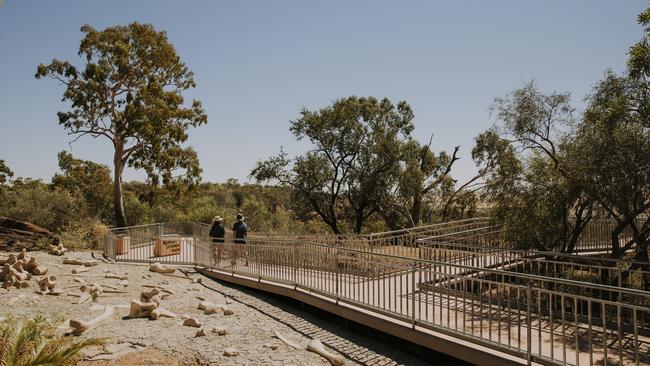
“We’re not on that tourist trail, but we’re the closest dinosaur site to any Australian capital city and there has been such a diverse range of discovery here.”
Travellers are starting to cotton on.
While it has come from an admittedly low base, visitor numbers have soared 300 per cent in the past five years.
Eromanga and Winton are at the forefront of a “dinosaur road map” being developed
by the state government to boost the niche tourism sector.
There are also other dinosaur destinations scattered across the Outback: Muttaburra (of the famed Muttaburrasaurus), Hughenden, Richmond, Opalton. It is hoped the road map will help build the profile of some of the lesser-known destinations and encourage aficionados to take the ultimate dinosaur road trip.
Mackenzie says the road map will help cement Queensland’s position at the forefront of Australia’s dinosaur industry.
“We really do have the lion’s share of it (dinosaur experiences), but it’s still so undersold,”
she says.
“We’ve got so much opportunity for growth. It’s really exciting.”
Tourism and Events Queensland chief executive Leanne Coddington says the road map will take on board valuable insights from the explorers leading the charge.
“There are many and varied dinosaur attractions across Outback Queensland, such as the Eromanga Natural History Museum, Australian Age of Dinosaurs, Kronosaurus Korner or Muttaburrasaurus Interpretation Centre, to name just a few,” she says.
“This road map is the first of many steps in allowing us to promote all these experiences under the one umbrella of ‘Outback Queensland dinosaur tourism’ to the world.”
According to Queensland government statistics, dinosaur attractions accounted for about 11 per cent of total visitor numbers to the Outback last year – more than 120,000 people. Those numbers will only swell with more discoveries such as the ones being unearthed in Winton and Eromanga and the publicity going with it.

For Scott Hocknull, the senior curator of geo sciences at Queensland Museum, there has never been a more exciting time for dinosaur discovery in the state.
The museum’s head of geo sciences since his extraordinary appointment as a wide-eyed 21-year-old more than two decades ago, Hocknull – a lifelong dinosaur fanatic – has worked closely with AAOD and the Eromanga museum on their groundbreaking discoveries.
He says the Outback’s geological factors, sitting on the remnants of the inland seas, have helped contribute to the breathtaking volume of discoveries, which at the moment show no signs of slowing down.
“It’s such a flat environment, there is not a lot of ground cover, so you have lots of exposed soil and rock and we have people out there [Winton, Eromanga and other hotbed locations] who have been doing this for a while now so they know what they are looking for,” Hocknull says.
“Suddenly that pile of rocks that most people wouldn’t recognise is attracting a second look and once you’ve got your eye in, the discoveries come thick and fast.
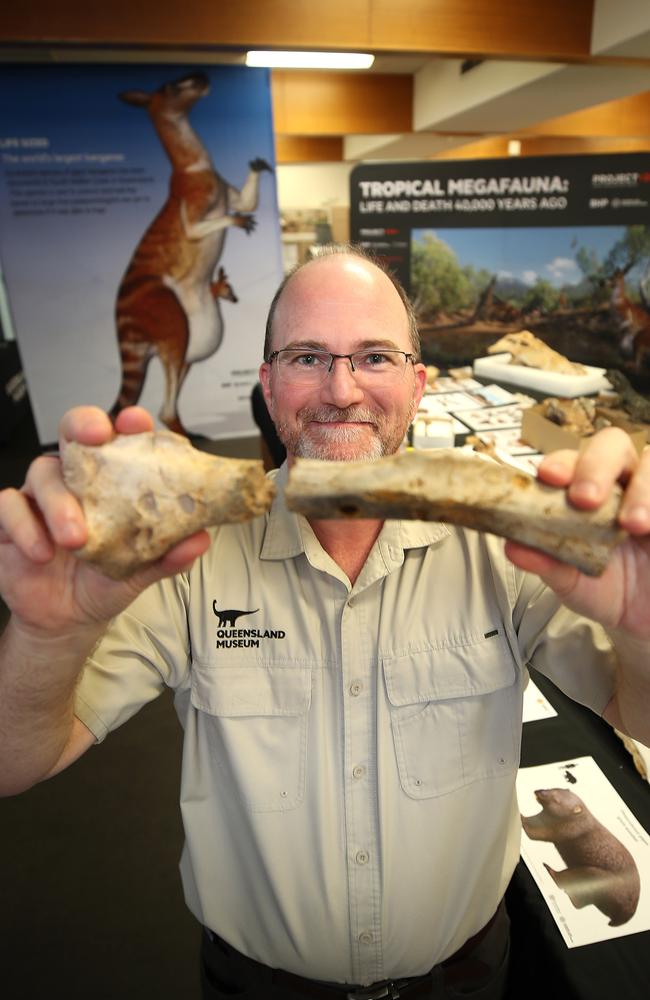
“It’s still like finding a needle in a haystack, but if you can find that needle, you can find the thread.”
He says it will still be some time before Queensland can truly rival some of the world’s most prolific dinosaur discovery zones, such as North and South America, but the state’s Outback now promised something that few other places can.
“We can’t say we’re the centre of the dinosaur discovery universe just yet, but we’re certainly the new frontier,” Hocknull says.
“People know all about the ‘celebrity’ dinosaurs like the T-Rex or stegosaurus, but the real exciting thing for us is that pretty much every discovery we make is going to be completely new to science.
“I’d like to think that in 30 years time, instead of seeing T-Rex toys or velociraptors or triceratops, kids around the world will be playing with toys of dinosaurs that we haven’t even discovered yet, from right here in Queensland.
“That would be pretty cool.”
More Coverage
The smart way to keep up to date with your Courier-Mail news
Originally published as Inside story of man who found bone that sparked outback town’s dinosaur frenzy




